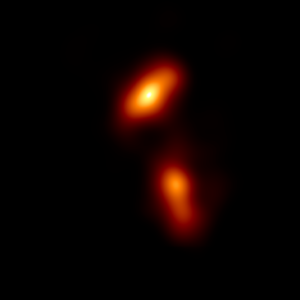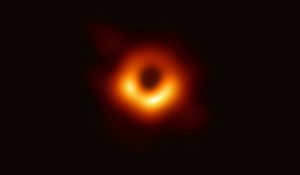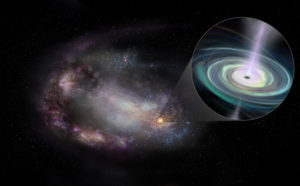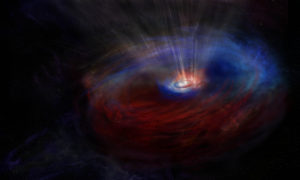What does an active black hole look like? It depends on your point of view.
Something is Lurking in the Heart of Quasar 3C 279
The Event Horizon Telescope has observed the finest detail ever seen in a jet produced by a supermassive black hole.
NRAO Jansky Fellow Kazunori Akiyama Receives 2020 ASJ Young Astronomer Award
Kazunori Akiyama, a Jansky Fellow of NRAO at MIT Haystack Observatory, has received the 2020 Young Astronomer Award from the Astronomical Society of Japan for his contributions to the first-ever images of a black hole.
Astronomers Find Wandering Massive Black Holes in Dwarf Galaxies
Studies with the VLA indicate that roughly half of the massive black holes in dwarf galaxies are not in the centers of those galaxies. This gives astronomers new insights into the conditions in which similar black holes formed and grew in the early history of the Universe.
The Turbulent Life of Two Supermassive Black Holes Caught in a Galaxy Crash
An international team of astronomers used ALMA to create the most detailed image yet of the gas surrounding two supermassive black holes in a merging galaxy.
Going Against the Flow Around a Supermassive Black Hole
At the center of a galaxy called NGC 1068, a supermassive black hole hides within a thick doughnut-shaped cloud of dust and gas. When astronomers used ALMA to study this cloud in more detail, they made an unexpected discovery that could explain why supermassive black holes grew so rapidly in the early Universe.











